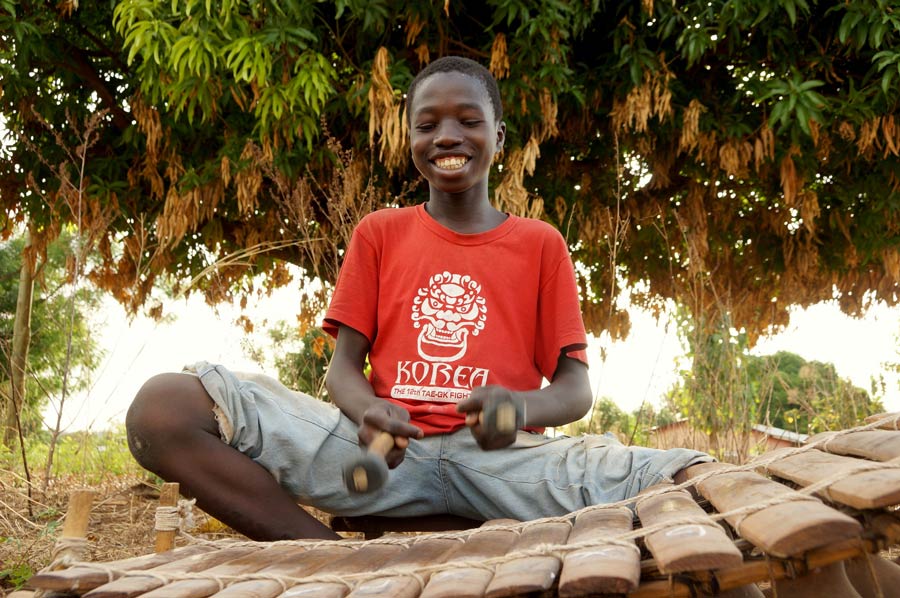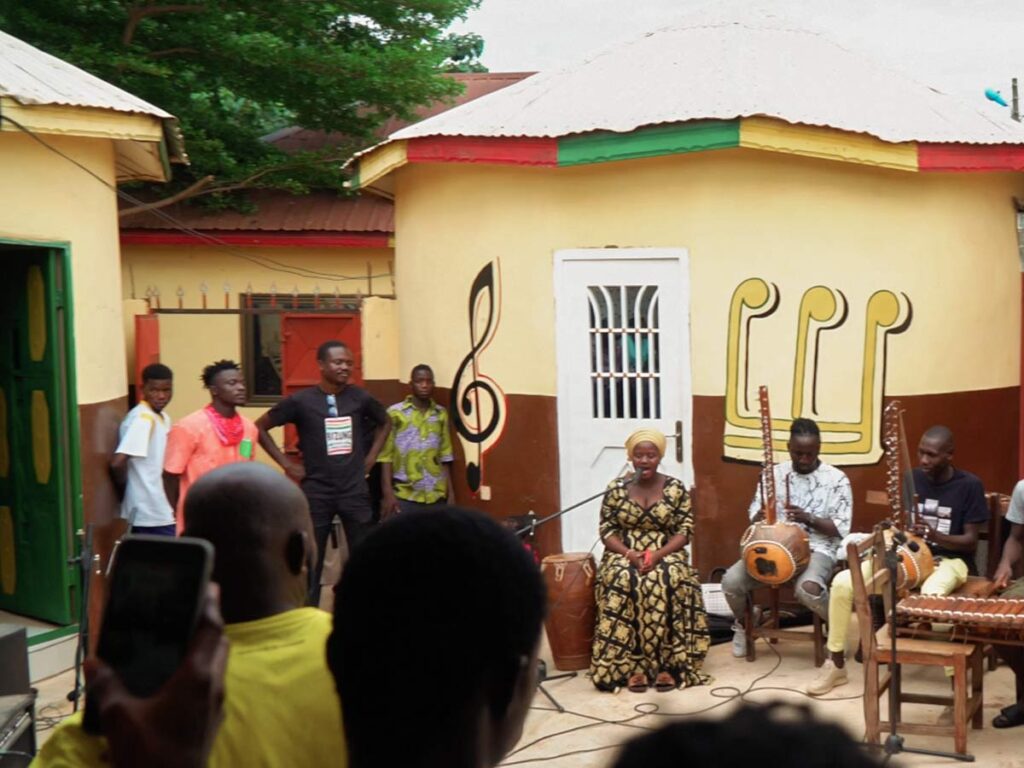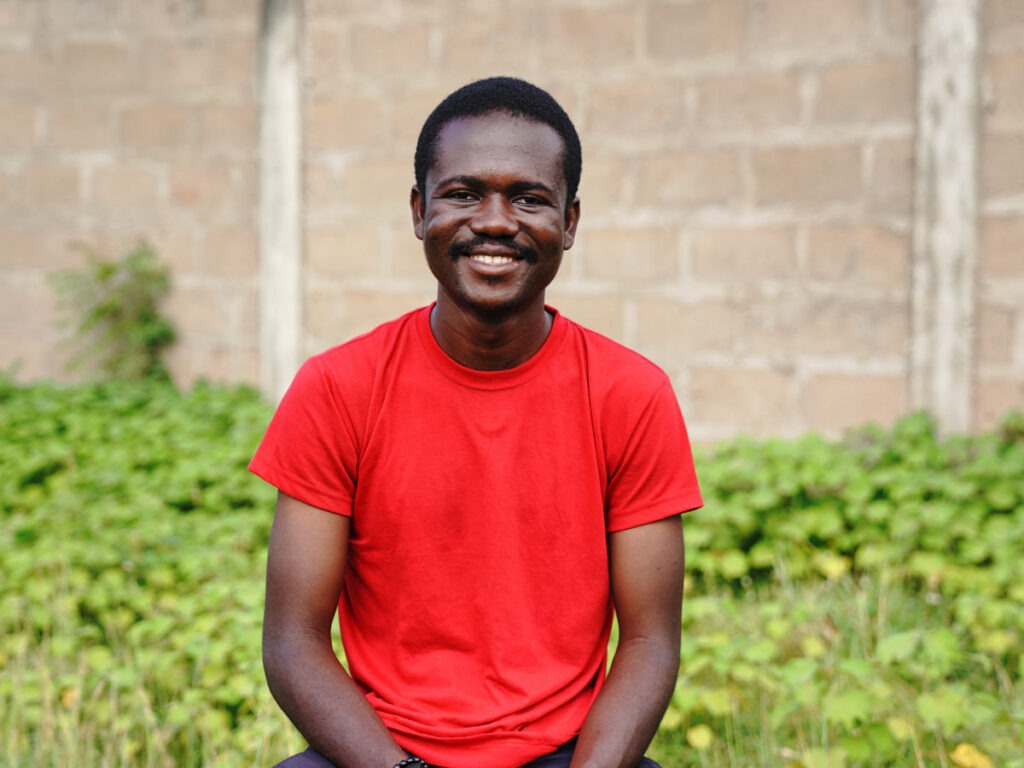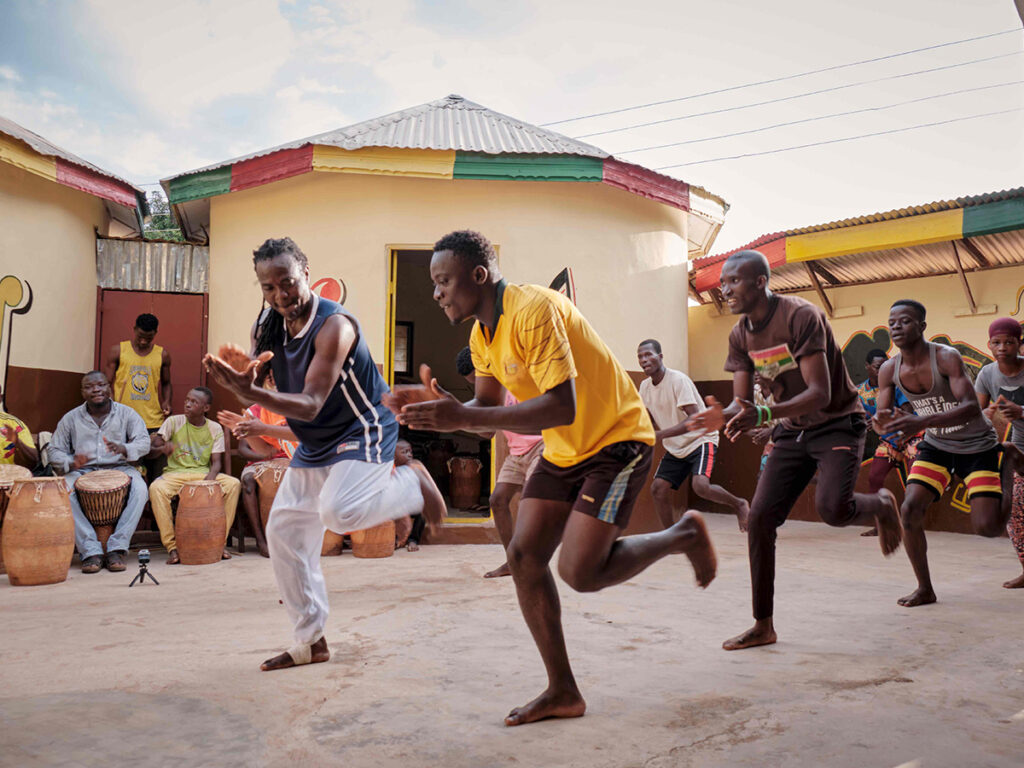The xylophones at Bizung are not indigenous to the tribes of the Northern Region. We brought them here from Lawra in the Upper West region of Ghana, close to the borders of Burkina Faso and Cote D’Ivoire. The big frames and the dangling gourds make for an imposing instrument, with a bright, sprightly sound unusual to the pace of life in Tamale. Bizung teacher B. A. Kolaan learned xylophone formally during the 1970s and 1980s at Winneba University, and certainly has the pedagogic skills and patience to teach this challenging instrument. Pentatonic, with three octaves, the children’s mallets have considerable distance to cover. Besides the difficulty in getting the layout of the keys—from G to D (the notes are written in chalk for reminders)—there is the problem of timing. 
The most basic principle of West African music may be “3 against 2”, also known as hemiola. This sort of polyrhythm creates a tension-release mechanism, wherein beats converge and diverge, cyclically (and almost philosophically). On the xylophone, hemiola can be executed with the left playing three while the right plays two beats or, for beginning learners, one pupil can play the two part, while the other child plays three beats over this recurrently. A joy to listen to and a challenge to play, Kolaan uses simple choral patternings to introduce this fundamental concept. In Dagari, the language of the people where the Ghanaian xylophone predominates, one such song used at Bizung is as follows:
Dape lere ma/ The Spider’s mother:
A nang tie bier/ The scorpion stung it
O de kuno yoo/ It is crying.
Perhaps we should compose another, more upbeat verse:
The Bizung Children:
Under the trees,
They are smiling.





